Bold Thinkers Behind Duke's Sustainable Operations
Casey Collins is one of the leaders in bringing sustainability to Duke's operations.
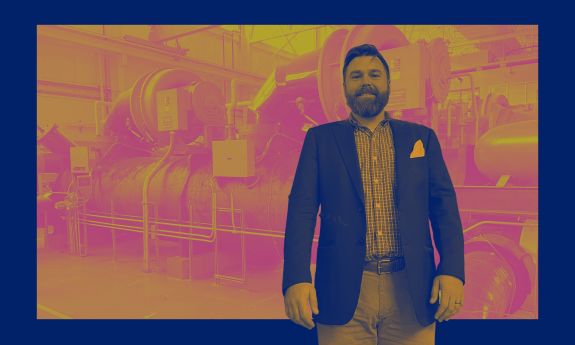
Duke has so many students, staff and faculty that are also right there at the table wanting to do more, wanting to push us to achieve more.
Tavey Capps
“We couldn't do it without the help of stakeholders from across Duke. And those are departments like facilities, parking and transportation, dining, procurement, you know, the people who every day are doing the sustainability work, as well as being involved in the planning process and being a part of the goal setting. I think it has really led to a lot more connection to this effort than we would have otherwise,” Capps said.
Some of those efforts are visible, while others are inconspicuous – but all have an impact.
Transportation
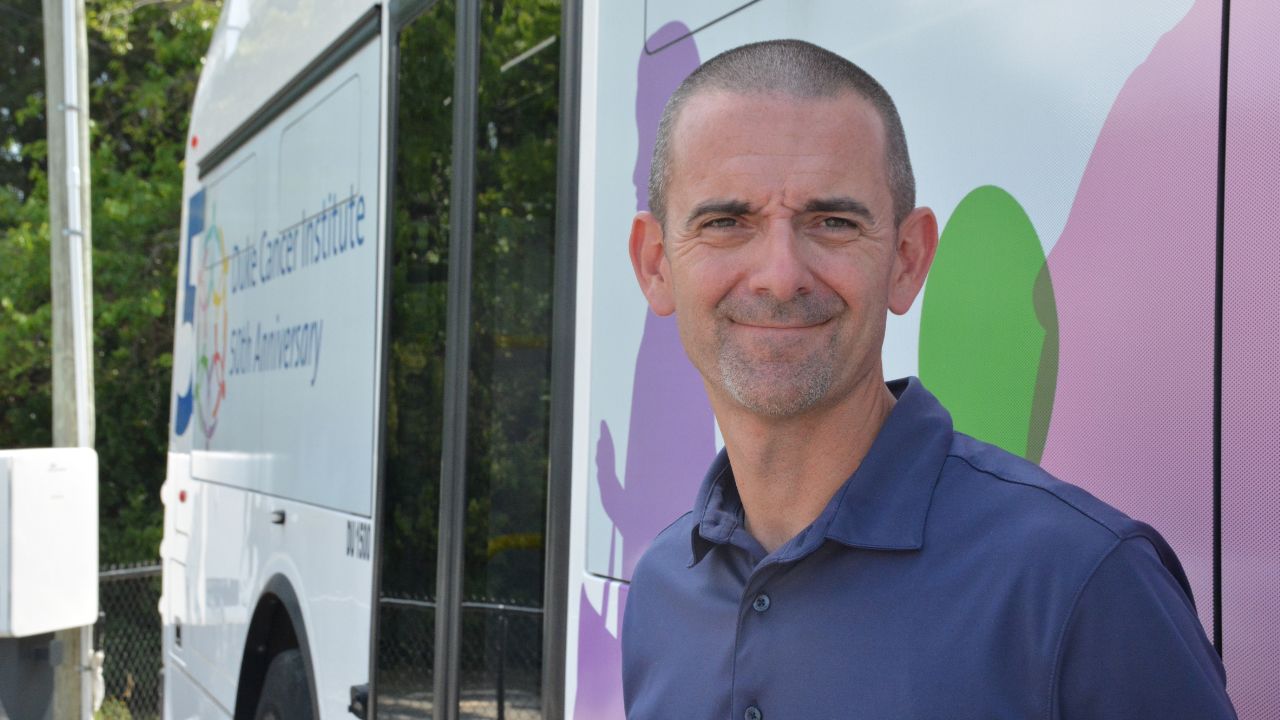
Take Duke’s transportation system. With more than 30,000 employees, thousands of students, and tens of thousands of visitors, Duke University and Health System generate a huge demand for transportation.
The university started purchasing hybrid buses nine years ago. Since 2020, it’s switched to all-electric vehicles, said Carl DePinto, executive director of parking and transportation. By 2027, Duke expects to have a fleet of 14 electric buses, nine hybrids and one remaining diesel.
“We are running about 18 hours a day. The buses are a huge piece of what we are trying to do to make sure we are environmentally friendly as a group,” said DePinto, who came to the university in September 2014.
But electric buses aren’t the only solution to reducing greenhouse gasses, said Tyler Dewey, who leads Duke’s alternative transportation efforts. There is the electric scooter program, the bike to work program and the car charging stations for those with electric vehicles.
I am out on campus talking to people about transportation options and we have seen an increase in people asking for electric chargers.
Tyler Dewey
Duke is currently working on a Sustainable Fleet and EV Charging plan to further reduce the impact of campus vehicles and expand EV infrastructure.
Overall, Duke’s greenhouse gas emissions were approximately 43 percent lower in fiscal year 2022 than in 2007. Part of that, of course, was the result of COVID, which kept many people off the road. With more people returning to work and school, the transportation department is conducting new studies.
“We will survey students and employees to learn about commute patterns so we can set the work goals for upcoming years. By this summer we will have a lot of good data,” said Dewey.
Added DePinto: “We look at it as a step-by-step process. We do things year-over-year to make our environment greener … knowing we have a carbon neutral goal we try to advance it as far out as possible so we can help the overall university even though we are a small department.”
Dining
From composting and recycling to the procurement of humane and sustainable animal products, those responsible for feeding Duke’s community are always looking to make dining a more environmentally friendly experience.
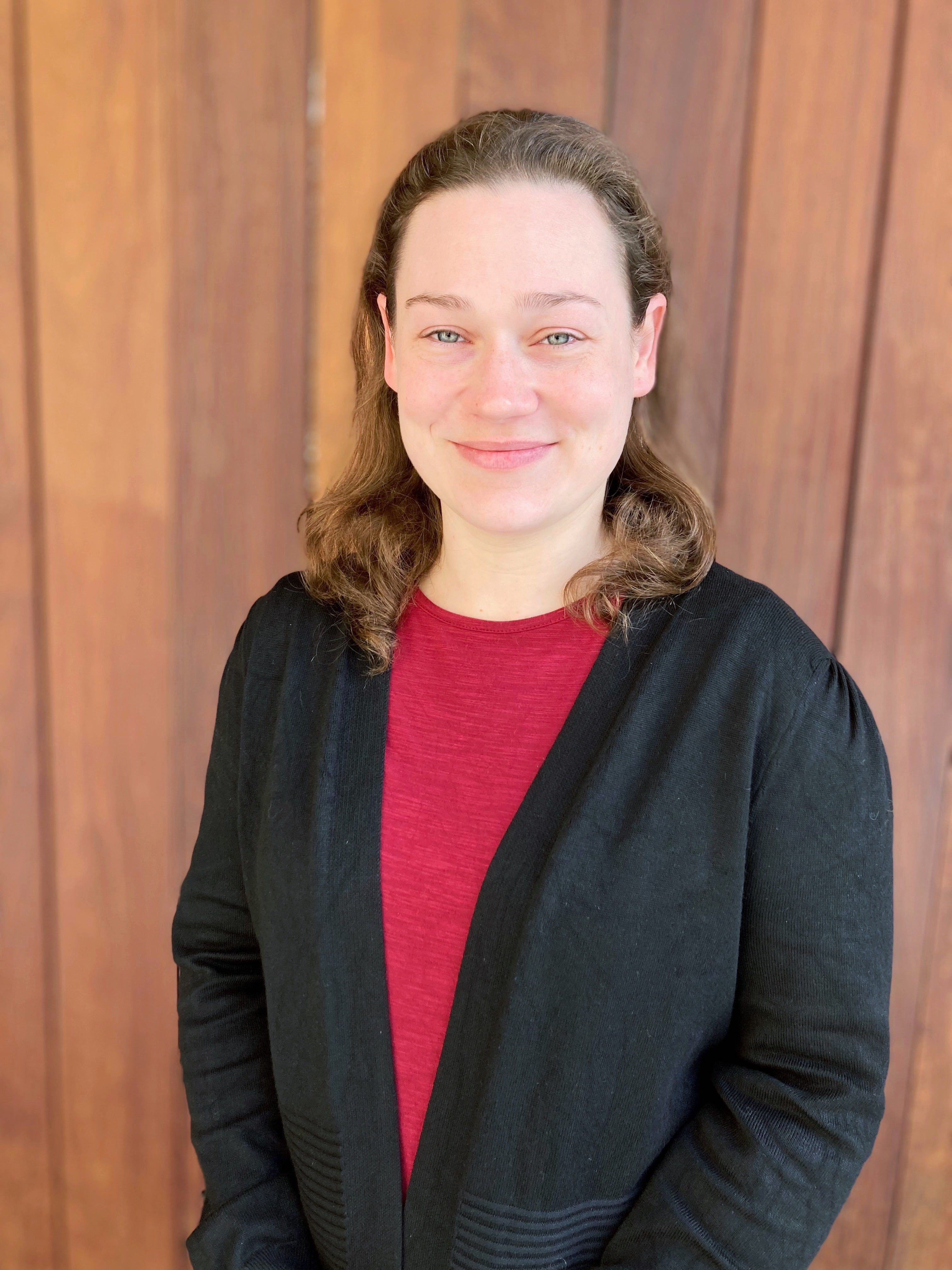
Robert Coffey, executive director of Dining at Duke, and Dining Sustainability Manager, Kaitlyn Welzen, have been instrumental in those efforts. Welzen joined the university about three months ago and has hit the ground running. Her efforts are focused on making sure all packaging coming out of the Brodhead Center, the hub of campus dining, is compostable.
“Kaitlyn brings a lot of experience and has been impactful – she’s juggling a lot in making an impact and looking forward to the future,” said Coffey.
While COVID led to a positive reduction in greenhouse gases for the transportation department, it presented dining with new challenges.
“We were making great progress and we know what happened in March 2020 and that derailed us for the last two-and-a-half years. It wasn’t just the pandemic, but the aftermath effects with the supply chain, labor shortages … and now also financially with inflation,” said Coffey. “There’s a reality, you have to be sustainable financially, too.”
Having more than 30 different dining venues on site serving 20,000 meals a day has its challenges. Coffey equates it to “pushing Jell-O up a hill.”
“Finding something that works for everyone that is fair and equitable, but also meets our sustainability goals is challenging, because you have to balance the business impact, and the realism of operational needs, with also meeting huge, really high bars of sustainability values,” said Coffey.
Welzen said she’s looking forward to finding new and better ways to improve everyone’s dining experiences.
“Even though we aren’t quite to where we want to be, work is happening. We are focusing on the tangible changes where we can make an impact,” she said.
Energy
“Every little bit of efficiency we can wring out of our energy systems on campus is a step toward climate neutrality,” said Casey Collins, interim director of utility operations and assistant director of energy management and data systems in Duke Facilities.
Collins leads a team of some 80 employees responsible for maintaining the university’s various power systems.
From the nearly 20 on-campus chillers that serve as the cooling source for 21-million-square-feet of the main campus, to the three substantial photovoltaic solar arrays located across campus, are all part of Duke’s commitment to becoming greenhouse neutral by 2024.
“We are doing whatever we can to influence energy at every possible level. How we use it, how we supply it, and we how we procure it, which means policy and regulatory engagement to see how we can get more access to other options,” Collins said.
There are three chiller facilities. Chilled water is an efficient way to cool buildings, thus saving energy and money.
During a tour of Chiller Plant No. 3, the most recent to open in the summer of 2020, Collins explained to a group of graduate students how a nearby six-acre storm water reclamation pond meets about three-quarters of the needs of the five chillers humming in the plant.
“It helps limit our burden on Durham’s water system and it’s cheaper. We are not having to buy water. It’s fractions of a penny per gallon and it cleans up storm water that then flows out into Sandy Creek to New Hope Creek and finally to Jordan Lake,” Collins said.
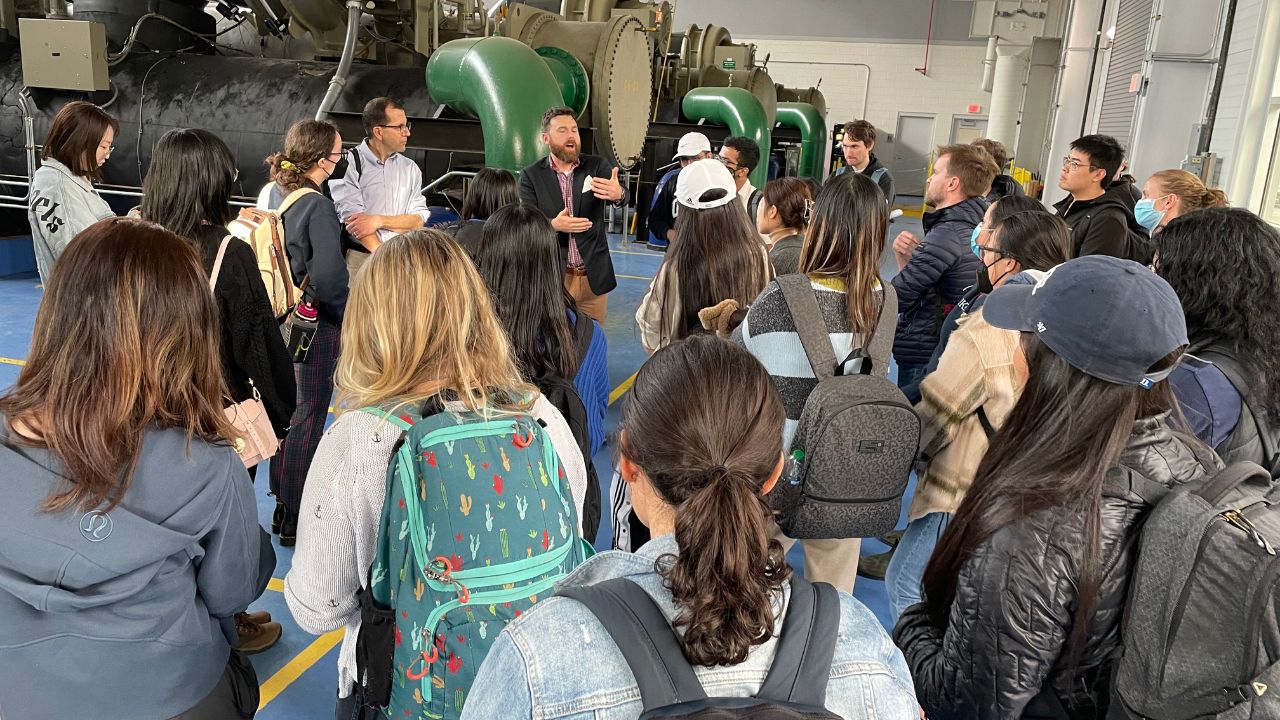
In addition, implementing district cooling reduces the campus electrical need by at least 60,000,000 kilowatt-hours each year compared to having individual cooling equipment at each building. That amount of energy was worth about $3.3 million last year alone, a savings figure that Collins said will grow in the next decade as costs continue to rise in North Carolina.
Duke also generates some of its own power via solar panels, the largest of which is on parking garage nine. Another is atop Chiller Plant No. 3 and the other is on top of Grainger Hall.
“They are important for not only for symbolism but also for the carbon-free power they generate,” Collins said.
Procurement
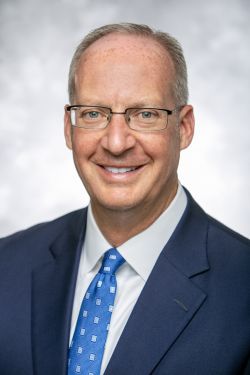
From the desks that students sit in, to the disposable containers they eat out of, Jim Churchman and his procurement team are working to ensure that items purchased by the university and health system have the least impact on the environment.
As vice president of procurement and supply chain for the university and health system, Churchman has begun to look at how purchases are made from a different perspective than in the past.
“It’s very much in its infancy stage, not only at Duke but across the United States,” said Churchman.
The university recently joined a collective called the Environmental Advisory Council – a national consortium of industry-leading peers who are charged with defining how to advance awareness and execution of environmental sustainability with all the goods and services bought. This includes not only the types of products consumed, but also partnering obligations with suppliers and trying to drive change and behavior.
“We are in this incubator type mode where we now have access to a dashboard that gives us analytical prompts around the environmental sustainability that we have with regard to the products we use and where we can make alternative choices,” Churchman said.
There are 23 sustainable attributes that they look at, such as chemical composition, recyclability, packaging and what will happen to those products in their post life environment from a disposability point of view. This allows those making purchases to be able to make informed decisions and find alternatives when possible that better meet sustainability goals.
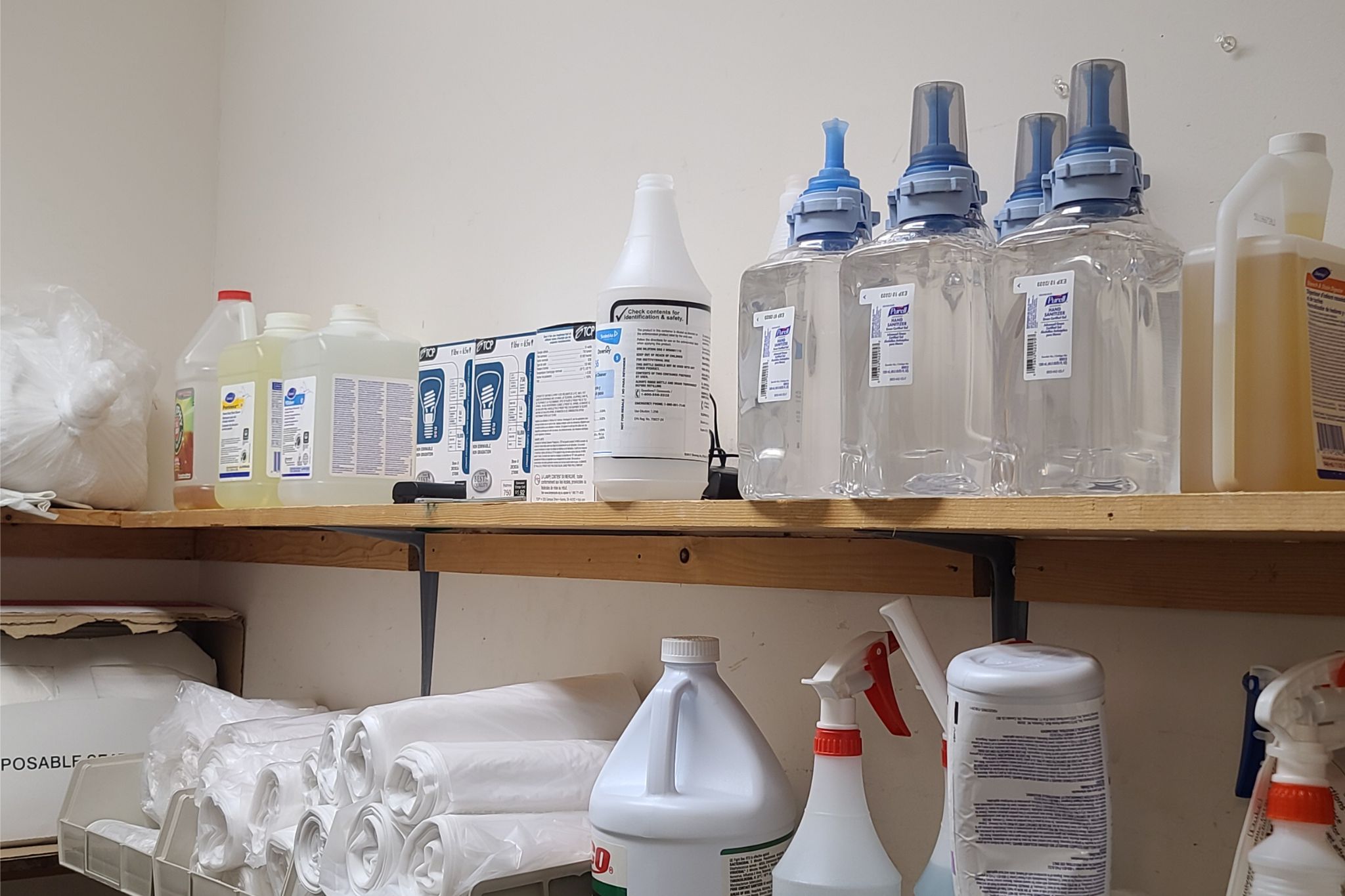
“We are starting to get key details about where we can find opportunities. We know food service and containers is one, furniture is another, computer technology and how we dispose of it and the components used are just some examples of areas we think we can move the needle on. Other areas are cleaning products and chemical compositions. This analytical profile that we are starting to see is starting to illuminate for us things we have never seen before,” Churchman said.
Churchman equates the early stages of this effort to when Energy Star ratings first came on the scene. When the program started in 1992 few knew about it, but today it’s the international standard for energy efficient consumer products.
“This is the next wave from a supply chain perspective, looking at environmental sustainability of all the goods and services that we buy,” he said.
Learn more about Duke's Climate Commitment at climate.duke.edu